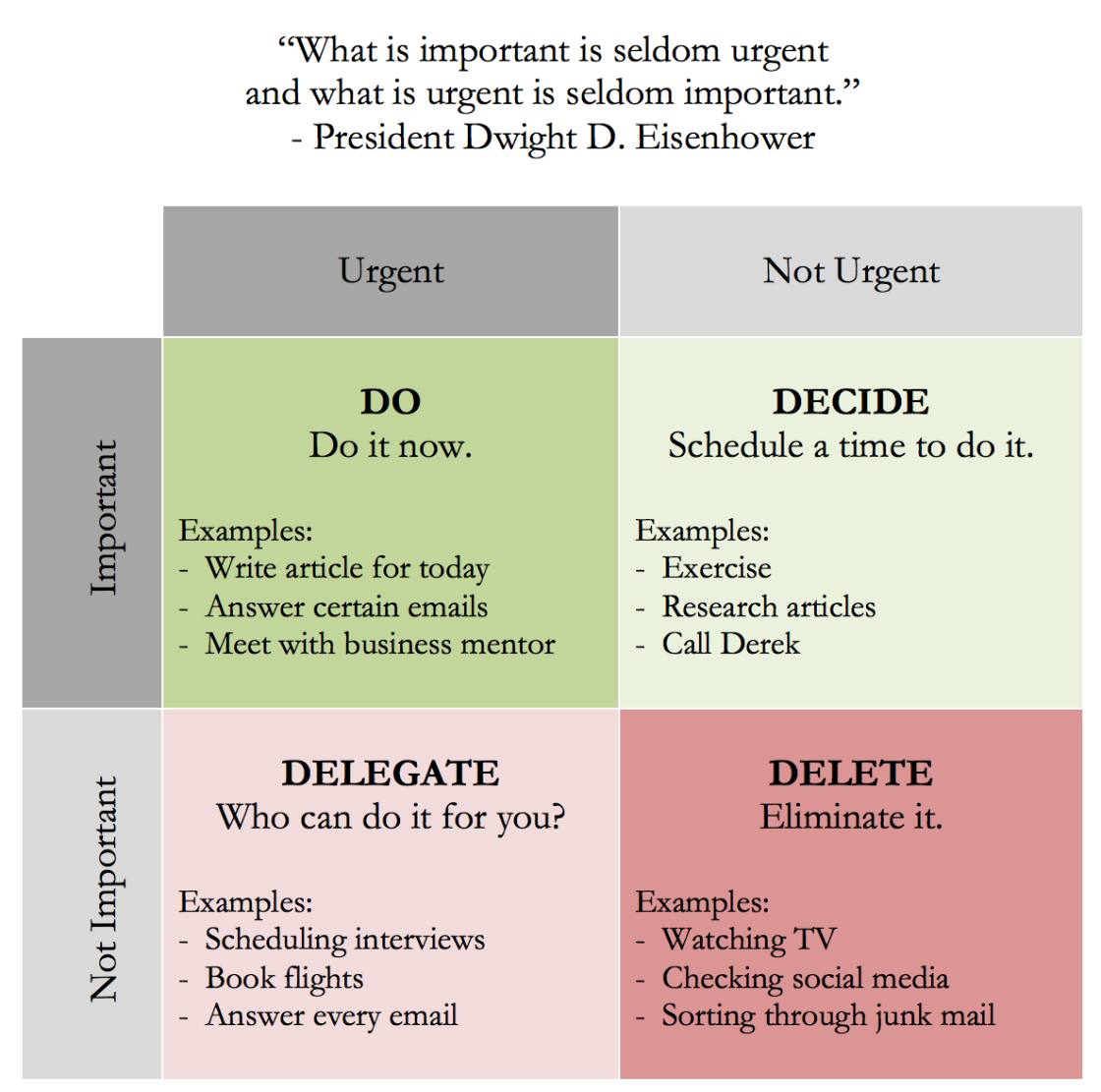The Eisenhower Method for Ensuring Productivity Through Accountability

Workforce management is a very complex business function and like most complex tasks, requires a strong focus on productivity in order to ensure successful execution. How can you, as a workforce management professional, better manage your precious time and ensure timely, effective completion of the myriad tasks under your purview? Take a page from one of American history’s most decorated figures, a wartime Supreme Commander and 34th president of the United States, Dwight D. Eisenhower.
President Dwight D. Eisenhower knew a thing or two about accomplishing enormous, complex tasks and goals. As the Allied Supreme Commander during WWII and then later as President of the United States, Eisenhower faced some very daunting challenges and developed a process for ensuring he succeeded at effectively managing large-scale operations—military and civil. Asked about how he prioritized his time among so many competing interests, he is quoted as having said, “I have two kinds of problems, the urgent and the important. The urgent are not important, and the important are never urgent.” That bit of wisdom was enshrined in what has become known in productivity management circles as the “Eisenhower Box” (see image below).
Similar to the Pareto analysis (or the 80/20 rule if you prefer) which states that 80% of tasks can be completed in 20% of the disposable time, and the remaining tasks will occupy up to the remaining 80% of the time, the Eisenhower box provides a simple means for identifying the urgency and importance of any list of tasks. Understanding how to properly prioritize duties, jobs and responsibilities makes it easier to apply the 80/20 rule to maximum effect. Here’s how it works.
As illustrated in the image below, there are two axes and four quadrants. Along the X axis one separates the important from the non-important and along the Y axis, the urgent from the not-urgent. All tasks should be dropped into the appropriate quadrant according to one’s best assessment.

This article by Jory MacKay does a great job of explaining how to determine which tasks are urgent and which are important. MacKay says, “In the top-left corner (Important and Urgent), you might put things like crises, deadlines, and problems. The top-right corner (Important and Not Urgent) could consist of things like relationships, long-term projects planning, and recreation. The bottom-left corner (Not Important and Urgent) might consist of interruptions, meetings, and activities. The bottom-right corner (Not Important and Not Urgent) might consist of time wasters, pleasant activities, and other trivial tasks.”
Utilizing the Eisenhower Box is effective not only for its utility in prioritization of tasks, but more importantly, in providing a framework for enforcing accountability which is the lifeblood of productivity and achievement. Without accountability, productivity suffers. Whether it is to one’s supervisor in an organization or to one’s self, holding a person accountable for the tasks for which they’re responsible ensures timely, satisfactory completion of the job. Armed with a clear sense of priority and a process for achieving tasks in the proper order of operation, a workforce management professional is more likely to accomplish all the important tasks assigned to them while avoiding time wasted on lower priority pursuits.
Moreover, in a team environment such as is encountered in a workforce management or HR department, where tasks are delegated to subordinates, the same prioritization techniques can be applied by subordinates to ensure they complete the work assigned to them in support of their manager/supervisor. When all team members are working together, productivity is the natural result of the intrinsic sense of accountability that flows down from the top. Knowing that every member of the team can be counted upon to prioritize and execute allows for a greater level of collaborative effort.
True productivity comes from this intrinsic sense of accountability—not just for the projects and tasks that make the individual shine, but for all projects in which each team member has some level of influence/input which supports the success of others. Effectively utilizing strategies like the Eisenhower Box for improved productivity demonstrates one’s own integrity and elevates the overall workplace culture through better teamwork and collective achievement.


